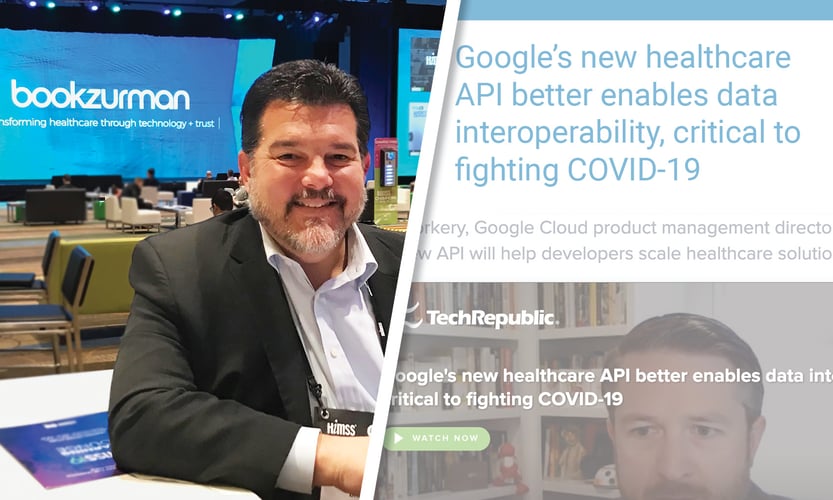How Important is Communication and Collaboration in Healthcare?


Healthcare IT Standards play a crucial role in modern healthcare communication. These standards establish a common language and framework for the exchange of health information, ensuring that data can be seamlessly shared and understood by different systems and healthcare providers. Adhering to these standards can facilitate effective communication among healthcare professionals, leading to improved patient care and outcomes. Here are a few points to consider…
Understanding Healthcare IT Standards
Through establishing a common language and framework, Healthcare IT Standards enable healthcare professionals to communicate and collaborate effectively. They eliminate communication barriers caused by disparate systems and formats, allowing for the seamless exchange of health information. This not only saves time but also reduces errors and misinterpretations that can occur when manually transferring data from one system to another.
Healthcare IT Standards also promote interoperability, which is essential in today's healthcare landscape. Interoperability enables healthcare professionals to access and share patient information across various platforms and systems. Regardless of the healthcare facility a patient visits, healthcare providers can access and understand their comprehensive medical history. It eliminates the need for repetitive tests and procedures, streamlining the care process and improving efficiency.
In addition to effective communication and promoted interoperability, a structured and organized framework for data exchange is provided through Healthcare IT Standards. This standardization ensures that information is consistently formatted and easily interpretable by healthcare professionals. It allows for more informed decision-making and improved collaboration among interdisciplinary teams. With standardized data exchange, healthcare professionals can easily analyze and interpret patient information, leading to better care coordination and enhanced patient outcomes.
Enhancing Communication and Collaboration in Healthcare
The exchange of information is the foundation of communication. Effective communication and collaboration are paramount in the healthcare industry. Why are these concepts so important? We feel these concepts are incredibly important for several reasons:
Seamless Exchange of Information - effective communication and collaboration ensure that healthcare professionals can exchange vital information seamlessly, leading to improved patient care and outcomes. When healthcare providers can communicate effectively, they can share important patient data, such as medical history, test results, and treatment plans, promptly. This allows for better coordination and decision-making, ultimately benefiting the patient and improving overall care.
Interdisciplinary Team Work - effective communication and collaboration enable interdisciplinary teams to work together efficiently. In a healthcare setting, different professionals, such as doctors, nurses, pharmacists, and therapists, need to collaborate closely to provide comprehensive care to patients. By communicating effectively and collaborating seamlessly, these professionals can ensure that each patient receives the necessary treatments and interventions. This not only enhances patient care but also reduces the risk of errors and improves patient safety.
Mutual Support Among Healthcare Professionals - when individuals can communicate openly and collaborate effectively, they can share their expertise and insights, leading to more innovative and informed decision-making. This ultimately benefits the entire healthcare organization, as it promotes a culture of continuous improvement and learning.
Enhancing Communication through Interoperability
Effective communication is crucial in the healthcare industry, and Healthcare IT Standards play a significant role in ensuring seamless and efficient communication among healthcare professionals. These standards provide a common framework and language for the exchange of health information, enabling data to be easily understood and shared across different systems and healthcare providers. Here are two ways these standards enhance communication:
Enabling Interoperability - healthcare professionals can access and share patient information across various platforms without the need for manual data entry. Interoperability eliminates the risk of errors or misinterpretation, allowing healthcare providers to have a comprehensive view of a patient's medical history, regardless of the healthcare facility they visit.
Framework for Data Exchange - having a standardized framework for data exchange ensures that information is structured and organized consistently. This standardization allows healthcare professionals to easily interpret and analyze data, leading to more informed decision-making and improved collaboration.
Streamlining Collaboration with Data Exchange
Healthcare IT Standards streamline collaboration by enabling efficient data exchange among healthcare providers. These standards can be leveraged to establish secure and seamless data-sharing mechanisms, allowing healthcare professionals to access and contribute to a patient's health record from different locations and systems.
By implementing these standards, patient data is easily accessible and comprehensible to all authorized healthcare professionals involved in a patient's care. This facilitates effective communication and collaboration, as healthcare providers can access relevant patient information, such as medical history, test results, and treatment plans, in a timely manner. A streamlined data exchange eliminates the need for manual data retrieval and promotes efficient teamwork, leading to improved patient care and outcomes.
Healthcare IT Standards further enable the integration of various healthcare systems and applications, allowing healthcare professionals to work seamlessly across different platforms. This integration enhances collaboration by providing a unified view of patient data, eliminating the need to switch between multiple systems and reducing the risk of information fragmentation.
Overcoming Challenges and Embracing the Future
While Healthcare IT Standards bring numerous benefits to patients and stakeholders, their implementation may also present challenges. One of the key challenges is the complexity of integrating different healthcare systems and applications to achieve interoperability. Technical complexities, such as data mapping, data exchange protocols, and system compatibility, must be navigated to ensure seamless communication and collaboration across systems.
Another challenge is the need for ongoing maintenance and updates to comply with evolving healthcare IT standards. Stay informed about the latest standards and ensure that the organization's systems and processes are aligned with these standards. This requires continuous training and education to keep healthcare professionals updated and proficient in using standardized processes and systems.
Despite these challenges, the future of healthcare IT standards is being embraced among healthcare professionals. They recognize that these standards are essential for the advancement of healthcare communication and collaboration. As technology continues to evolve, healthcare professionals are leveraging healthcare IT standards to harness emerging technologies, such as artificial intelligence and machine learning, to further enhance communication and collaboration in the healthcare industry.
In conclusion, Healthcare IT Standards have revolutionized communication and collaboration in the healthcare industry. These standards enable interoperability, streamline collaboration through data exchange, and improve patient care and safety with standardized processes. While there may be challenges in implementing and maintaining these standards, healthcare professionals are embracing the future and leveraging healthcare IT standards to drive innovation and improve patient care.


